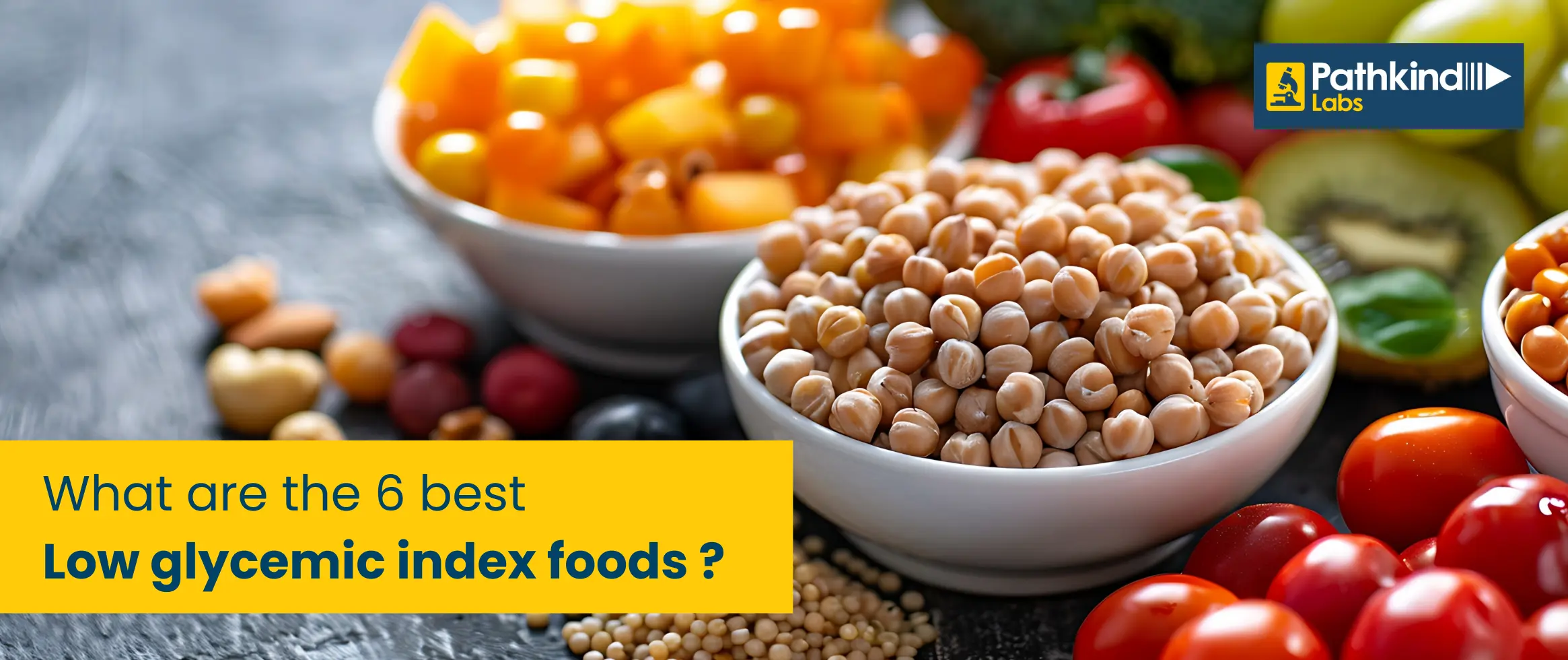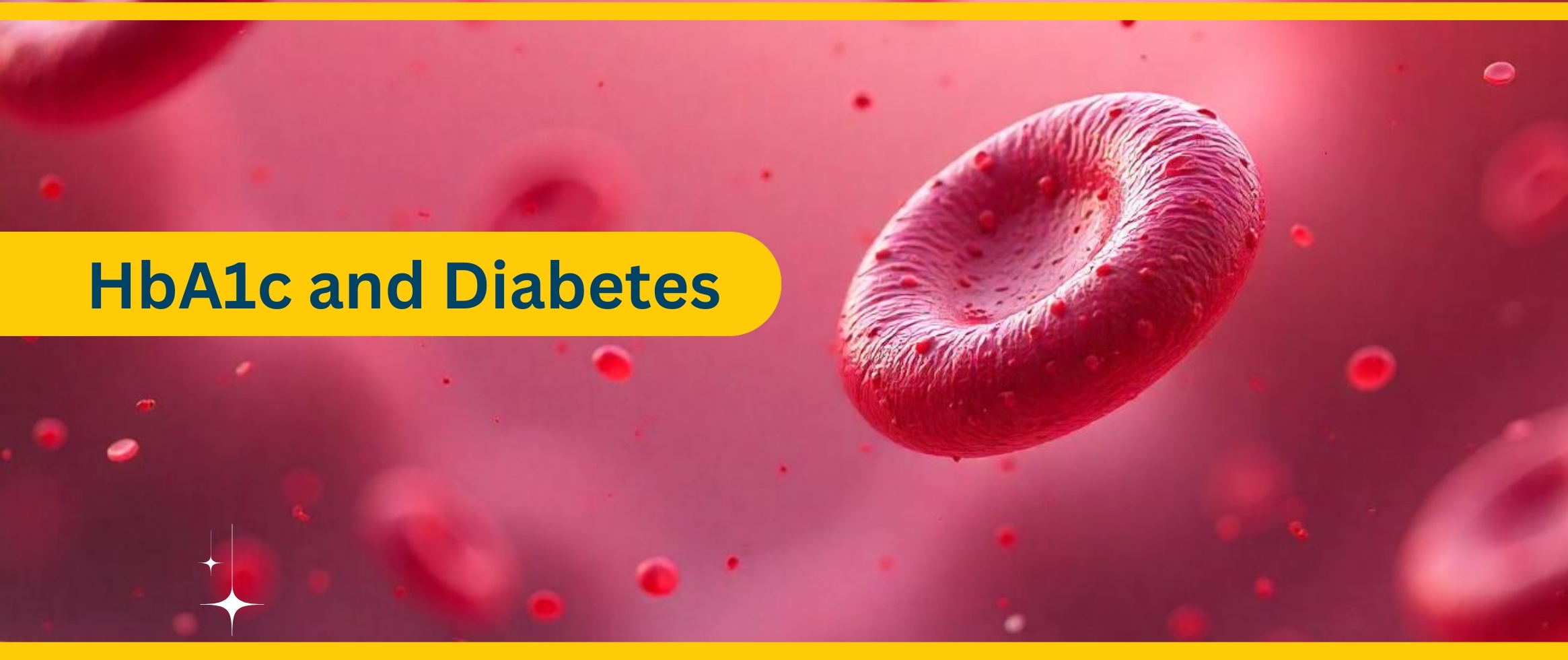HbA1C (Glycosylated Hemoglobin) also known as glycated/glycosylated haemoglobin, HbA1c is the average blood glucose level in your body for the last 2-3 months. This test is performed to detect, diagnose, and monitor people affected with diabetes or who are suspected of having one.
HbA1c refers to haemoglobin and glucose joined together. Haemoglobin is termed as the essential protein in the red blood cells that functions to carry oxygen throughout the body. The value detected in the HbA1c test directly represents the amount of glucose in your blood.
HbA1c Test for Diabetes Overview
Also known as glycated/glycosylated haemoglobin, HbA1c is the average blood glucose level in your body for the last 2-3 months. This test is performed to detect, diagnose, and monitor people affected with diabetes or who are suspected of having one.
HbA1c refers to haemoglobin and glucose joined together. Haemoglobin is termed as the essential protein in the red blood cells that functions to carry oxygen throughout the body. The value detected in the HbA1c test directly represents the amount of glucose in your blood.
Since the red blood cells survive in our body for up to four months, the HbA1c test indicates the amount of sugar present in the blood for the past 2-3 months. HbA1c test is different from fasting blood sugar (FBS) or random blood sugar (RBS) which only measure the amount of glucose present in the blood at that moment.
What Does an HbA1c Test Diagnose?
An HbA1c test is performed to screen or monitor:
- Type 2 Diabetes – If you’re affected with type 2 diabetes, your blood sugar levels get high as your body is unable to produce adequate insulin to move blood glucose from your bloodstream to the main cells. Type 2 diabetes also happens when your cells stop responding to insulin. An HbA1c test measures the amount of glucose present in your bloodstream over a period of 2-3 months and helps doctors devise the treatment plan accordingly.
- Prediabetes – The prediabetes stage means that a person’s blood glucose levels are higher than a normal person’s but not high enough to be diagnosed as a diabetic. This is a reversal stage where one can resort to healthy eating and lifestyle modifications to prevent becoming type 2 diabetes.
If you have diabetes already or are in a prediabetic stage, an HbA1c test helps detect and monitor your condition. This also helps to check how well you’ve been controlling your blood sugar levels.
Who Needs an HbA1c Test?
Based on CDC guidelines, everyone in diabetes and prediabetes stage should get themselves checked for HbA1c if:
You’re 45+ years
- If your results come normal, get yourself tested every 3 years.
- If your result shows you fall in the prediabetes stage, you should ideally get it tested every year. Speak to your doctor about reversal techniques here or tips to reduce your risk of getting type 2 diabetes.
- If your results are indicative of type 2 diabetes, get tested for HbA1c twice a year to monitor the condition and effectiveness of treatment.
You’re below 45 years but have the following risk factors:
- You’re prediabetic;
- Have obesity
- Have a family history of diabetes, any parent or sibling with type 2 diabetes
- Have high blood pressure levels
- Have high cholesterol levels
- Already have heart disease or had a stroke in the past
- Are moderately physically active, less than thrice a week
- Follow a sedentary lifestyle
- Have had gestational diabetes (during pregnancy)
- Have Polycystic Ovarian Syndrome (PCOS)
Besides the above, you should get tested for HbA1c if you’re experiencing the following symptoms:
- Excessive and uncontrollable thirst
- Frequent urination, particularly at night
- Extreme hunger pangs
- Unexplained weight loss without trying
- Vision blurring
- Feeling of numbness or tingling in hands or feet
- Dry, itchy, and scaly skin
- Fatigue
- Slow healing wounds
- Getting more frequent infections than usual
Preparations & What to Expect During an HbA1c Test?
There’s no special preparation required for getting an HbA1c test done. You don’t need to fast or skip taking your regular medicines. Getting an HbA1c test done is simple; either you can book a home sample collection or walk in into your nearest Pathkind Lab and get tested.
When going for an HbA1c test, the phlebotomist will insert a small needle to take a blood sample from your vein. When the needle is inserted, you will experience a pricking feeling that goes away after the needle is drawn out. Any small bruise or pain at the spot of the needle will go away automatically in a few minutes to hours. There is no risk in getting an HbA1c blood test done.
How’s HbA1c Different from Finger Prick Test for Blood Sugar?
An HbA1c test measures the blood glucose values in your bloodstream over a long range of time, 2-3 months, and requires a venous sample to be drawn from your arm for the testing. Whereas, the finger-prick test for measuring blood glucose indicates the number of glucose levels in your blood at that specific moment.
In the finger-prick method, you get real-time test result information while in the HbA1c, the usual reporting time is 24 hours. A random blood sugar test result gets affected by recent changes in blood sugar levels while the HbA1c test result isn’t.
How To Understand HbA1c Test Results?
HbA1c tell you the percentage of your haemoglobin coated with glucose. The ideal percentage ranges are only an indication of what’s normal; your doctor will fix an ideal normal range for you based on your clinical symptoms, medical history, and other details.
If you’ve never been previously diagnosed with diabetes and your HbA1c test results are more than 6.5%, it confirms that you’re either in a prediabetes stage or already have it. If your levels are lower than 6.5%, your doctor might prescribe you other tests to reach a confirmed diagnosis.
The percentage range commonly used in HbA1c test reporting is:
- Normal – Below 5.7%
- Prediabetes – Between 5.7% and 6.4%
- Diabetes – 6.5% and higher




 NABL approved
NABL approved  Most Trusted by
Most Trusted by  Accuracy &
Accuracy &  Widest Range
Widest Range 


















